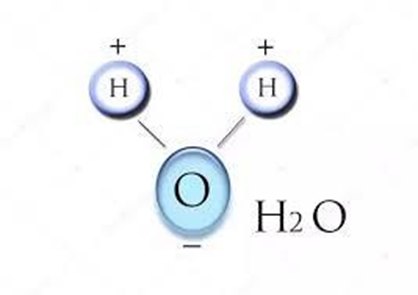Why Is H20 A Liquid And H2S A Gas?
- Posted on
- Home /
- Why Is H20 A Liquid And H2S A Gas?
- 484
Why, in your opinion, H20 A Liquid And H2S A Gas? If you don’t already know the answer, continue reading below.
Water is a compound made up mostly of two hydrogen atoms and an oxygen atom. It is also known as “H20” or “liquid water.” The chemical formula for water is H2O.
Why h2o is liquid and h2s is gas at room temperature
In simple Words : Oxygen is paramagnetic.
H2O definition and formula:
H2O is a molecular formula of water, also known as dihydrogen monoxide. It is a combination of two hydrogen atoms and one oxygen atom.
Because each water molecule contains two hydrogen atoms and one oxygen atom (H2O), it takes the form of a cube, just like an ice cube.

The element hydrogen forms chemical bonds not only with itself but also with other elements like oxygen, nitrogen, and carbon.
Because of this, water is very stable.
Because oxygen has a high electronegativity, water molecules are able to form hydrogen bonds with one another (second only to fluorine).
As a result of this, hydrogen atoms from other water molecules link up with oxygen to create a hydrogen bond, which results in inter molecular hydrogen bonding.
Because sulphur has a lower electronegativity than oxygen does, hydrogen bonding is significantly weaker in the case of hydrogen sulphide (H2S). Hydrogen sulphide can be written as “hydrogen sulphide.”

Therefore, water exists in the form of a liquid at room temperature, whereas hydrogen gas takes the form of a gas.
Water is a compound of two hydrogen atoms and an oxygen atom. This makes it polar because it has both positive and negative charges. Polar compounds are attracted to each other by electrostatic forces.
H2O molecules are polar because they have a positive charge at their center and a negative charge around the outside. This polarity allows them to attract other molecules with opposite charges.
In contrast, H2S is a gas. It has no net charge and does not bond with anything else. Because it is a gas, it cannot form a liquid.
h2o is liquid due to
H2O molecules form into liquid droplets when they come together.
In chemistry, water is a chemical compound consisting of two hydrogen atoms and an oxygen atom. Its molecular formula is H2O.
Water is a polar molecule because its hydrogen is attracted to each other while its oxygen is attracted to the negative charge of another molecule. This makes water very reactive.
At room temperature, water is a polar inorganic compound that lacks taste, odour, and nearly all colour. Water is also tasteless and odourless. Due to the ease with which many solutes dissolve in water, it is generally agreed that water should be considered the general solvent. It is the substance that makes up the greatest portion of the earth.
At a temperature of 298 Kelvin, also known as room temperature, water is in its natural state of being a liquid.
H2S definition and formula.
H2S is the abbreviation for the chemical compound known as hydrogen sulphide. It is a flammable chalcogen-hydride gas that is odourless and colourless. It is also toxic and perishable.
Underground mine gas is a term for gaseous mixtures containing hydrogen sulphide that have a foul odour and are referred to as odorous. Carl Wilhelm Scheele, a Swedish chemist, is credited with discovering the chemical make-up of purified hydrogen sulphide in the year 1777.
What happens when hydrogen sulphide enters the environment?
- As a gas, hydrogen sulphide can be released into the atmosphere.
- The half-life of hydrogen sulphide in the atmosphere is approximately 18 hours.
- It changes into sulphur dioxide and sulfuric acid when it is released into the atmosphere as a gas.
- In certain circumstances, it is possible for industrial facilities to discharge it as waste liquid.
How does hydrogen sulfide affect health?
Contact with low concentrations of hydrogen sulfide can cause eye, nose or throat irritation. Some asthma sufferers may find it difficult to breathe. Short contact with high concentrations of hydrogen sulfide (greater than 500 ppm) can cause unconsciousness and possibly death.
In most cases, a person appears to regain consciousness without any other consequences. However, in some individuals, there may be permanent or long-term effects, such as headaches.
Poor attention, poor memory and poor motor function. Normal environmental concentrations of hydrogen sulfide have not been found to have any health effects on humans.
Read Also:
Why Is H20 A Liquid And H2S A Gas?
Why do we get instant energy from Glucose
Why Is the Plasma Membrane Called Selectively Permeable?
